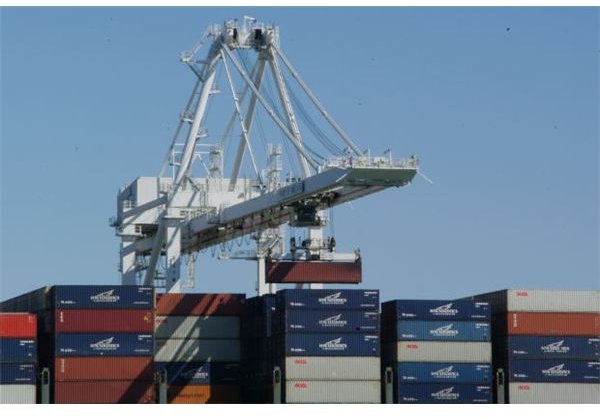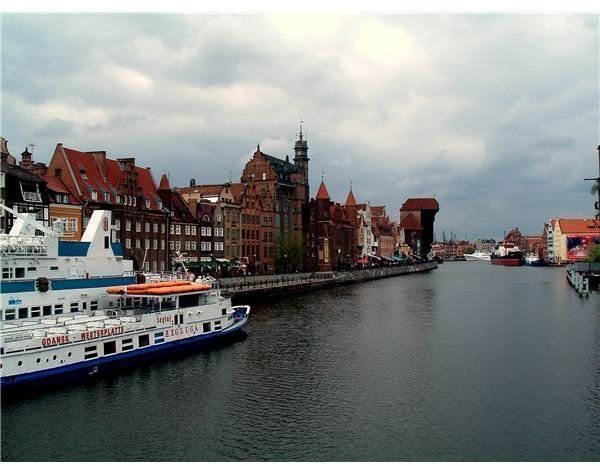Explaining the Principle of Comparative Advantage
Absolute Advantage and Comparative Advantage
The economist David Ricardo, working in the first half of the 19th century, developed the theory of comparative advantage to explain why it is beneficial for countries to engage in international trade. The comparative advantage principle emphasizes the benefits of specialization and international trade to the economy of a country. The highest level of output may be achieved by concentrating resources on those activities that have the lowest costs of production, or the highest level of productivity. Two countries will find it beneficial to trade where there is a difference in the opportunity cost of production of certain goods. Only if the comparative costs were exactly the same would it not be worthwhile to trade.
David Ricardo was building on the work of the economist Adam Smith who had developed a theory of absolute advantage to explain the benefits of specialization and international trade. The theory of absolute advantage may be explained by an example of two countries, 1 and 2, who each produce two goods, A and B. Country 1 can produce good A in 20 worker hours and good B in 30 worker hours. Country 2 can produce good A in 40 worker hours and good B in 20 worker hours. Worker hours are the only cost that needs to be taken into account in this example as all other costs are assumed to be negligible.
It is clear that country 1 has an absolute advantage over country 2 in producing good A, because it can produce this good in 20 worker hours as opposed to the 40 worker hours required by country 2 to produce the same item. It is equally clear that country 2 has an absolute advantage over country 1 in the production of good B, since country 2 can produce good B in 20 worker hours rather than the 30 worker hours that country 1 needs to produce the same good. It therefore makes sense for country 1 to concentrate its resources on producing good A while country 2 specializes in the production of good B; the two countries then engaging in international trade with each other to buy the goods from the other country that they do not produce themselves.
David Ricardo realized that the theory of absolute advantage was only part of a wider reality, which could be better explained by the principle of comparative advantage. He saw that not only does it make sense to specialize and engage in international trade when a country has an absolute advantage in the production of a certain good, but it still makes sense to engage in international trade where the country does not necessarily have an absolute advantage ,but has a comparative advantage in the production of a certain good. In other words, where a country can produce good C more cheaply in terms of opportunity cost than its competitors, it makes sense for that country to specialize in the production of good C and engage in international trade. This enables the country to achieve higher levels of output and increase its national income.
Example of Comparative Advantage

The theory of comparative advantage may be illustrated by another example. Again assuming that all costs of production may be expressed in terms of labor costs, Country 3 can produce good E in 30 worker hours and good F in 90 worker hours. Country 4 produces good E in 20 worker hours and good F in 40 worker hours. Country 4 therefore has an absolute advantage in the production of both goods E and F. However the theory of comparative advantage contends that specialization and international trade between countries 3 and 4 still make sense.
The advantage of trade in this example may be explained by looking at the opportunity cost of production of good E or good F by each country. The opportunity cost is found by looking at the best alternative use of those resources that have gone into producing a particular good. For Country 3, the opportunity cost of producing one unit of good F is three units of good E, as these could be produced in the same number of worker hours.
In the case of country 4, the opportunity cost of producing one unit of good F is two units of good E, which can be produced with half the number of worker hours. Country 4 is therefore relatively efficient at producing good F, which can be produced for an opportunity cost of two units of good E whereas in country 3 the opportunity cost of producing F is three units of good E. Country 4 therefore has a comparative advantage in the production of good F.
In country 3 good E can be produced for an opportunity cost of one-third of a unit of good F. In country 4, on the other hand, the opportunity cost of producing good E is rather higher, amounting to half a unit of good F. Country 3 therefore has a comparative advantage in the production of good E.
Therefore, if country 3 specializes in the production of good E while country 4 specializes in the production of good F, and the two countries trade with each other to import the goods in which they do not specialize, both countries can achieve a higher level of output by focusing their activity on the areas of highest productivity.
Comparative Advantage in the Modern World
The principle of comparative advantage is clearly a simplified model of reality, assuming that transport and other costs relating to the supply chain are not significant. There are assumed to be no tariff or quota barriers to imports. The factors of production such as labor are assumed to be perfectly mobile and the traders on the international market are assumed to have complete knowledge of the market and of where the cheapest goods are to be purchased.
Some effects of comparative advantage may however be seen in the modern world. For example, developed countries with their supply of specialized, educated labor are moving towards specialization in the provision of services so as to exploit the skills of their workforce while some developing countries with large populations clearly have a comparative advantage in labor intensive activities such as some branches of manufacturing. The effects of comparative advantage are however distorted by protectionist measures such as tariff barriers which aim to keep in place domestic industries that might otherwise not survive.
Another aspect of comparative advantage may be seen in the operation of companies within particular sectors. Companies with comparative advantage in certain areas may increase their income by concentrating on their core competencies. By specializing in those activities where productivity is highest, they are able to exploit their skills to increase efficiency, lower costs and achieve growth in earnings.
References
-
“Economics” by Alain Anderton, 5th edition, Pearson Education 2009
-
Image credits: schick on morguefile and seemann on morguefile
-
Net MBA on http://www.netmba.com/econ/micro/comparative-advantage/
